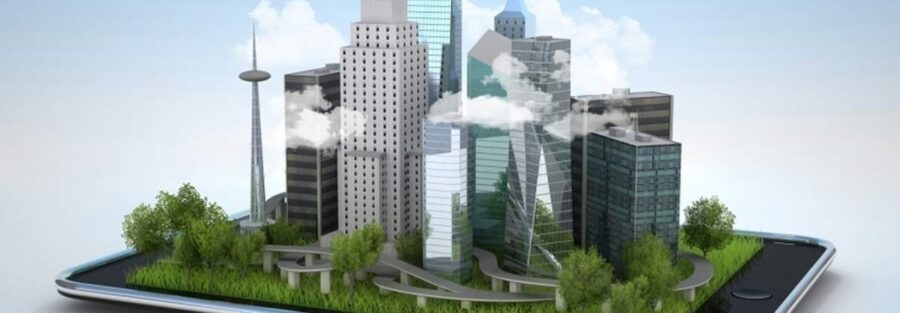Smart city architecture refers to the design and framework of urban environments that leverage technology, data, and innovative solutions to enhance the quality of life for residents, improve urban services, and promote sustainable development. Smart city architecture integrates various technologies and systems to create a connected and efficient urban ecosystem.
Here are some key components and features of smart city architecture:
Digital Infrastructure: Smart cities require a robust digital infrastructure, including high-speed internet connectivity, data centers, and communication networks to facilitate the seamless exchange of information and data.
Sensors and Internet of Things (IoT): Sensors are placed throughout the city to collect real-time data on various parameters such as traffic flow, air quality, waste management, energy consumption, and more. The Internet of Things (IoT) connects these sensors to a central system for data analysis and decision-making.
Data Analytics and AI: Collected data is processed and analyzed using advanced analytics and artificial intelligence (AI) techniques. This helps in identifying patterns, making predictions, and optimizing various urban services, such as traffic management and waste collection.
Smart Mobility: Smart cities focus on efficient and sustainable transportation systems. This includes intelligent traffic management, real-time public transit information, bike-sharing programs, and promoting electric vehicles.
Energy Management: Smart city architecture incorporates smart grids and energy-efficient solutions to monitor and optimize energy consumption. This may involve integrating renewable energy sources and using energy storage technologies.
Waste Management: Sensors and data analytics are used to optimize waste collection routes, monitor trash levels in bins, and encourage recycling practices.
Smart Buildings: Buildings are designed with energy-efficient features and smart technologies, such as automated lighting, heating, cooling, and security systems. These systems can be controlled remotely through smartphone apps.
Public Services: Smart city architecture includes digital platforms for accessing public services, making payments, and interacting with government agencies. This enhances citizen engagement and convenience.
Safety and Security: Integrated surveillance systems, emergency response mechanisms, and predictive policing techniques contribute to enhancing public safety and security.
Environmental Sustainability: Smart city architecture promotes sustainable practices by monitoring and reducing environmental impact. This includes water management, air quality monitoring, green spaces, and promoting eco-friendly behaviors.
Smart Governance: Smart cities utilize technology to improve governance processes, facilitate e-governance, and enhance transparency and citizen participation in decision-making.
Citizen Engagement: Smart city architecture encourages active citizen participation through digital platforms, allowing residents to provide feedback, report issues, and collaborate with local authorities.
Resilience and Disaster Management: Smart cities prepare for natural disasters and emergencies by incorporating resilience strategies, early warning systems, and efficient disaster response mechanisms.
Urban Planning and Design: Smart city architecture considers the layout of urban spaces, optimizing land use, and ensuring that technology integration complements the overall aesthetics and functionality of the city.
Privacy and Data Security: As data is a crucial aspect of smart city architecture, ensuring data privacy and security is paramount. Systems should be designed to protect sensitive information and maintain the trust of residents.
In summary, smart city architecture aims to create urban environments that are technologically advanced, sustainable, efficient, and citizen-centric. By leveraging data, technology, and innovation, smart cities enhance urban living and address the challenges of urbanization in the 21st century.



